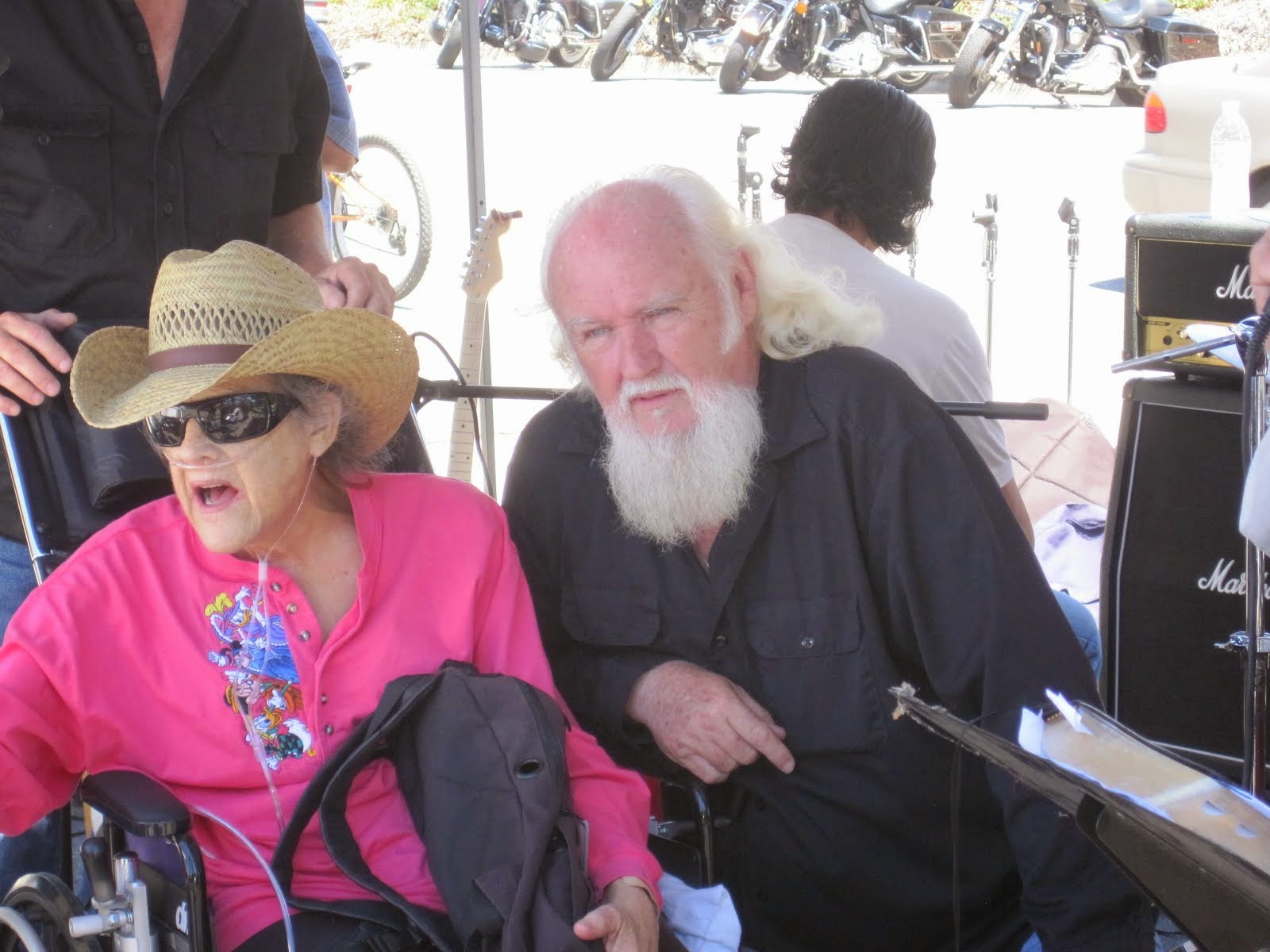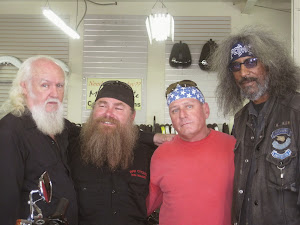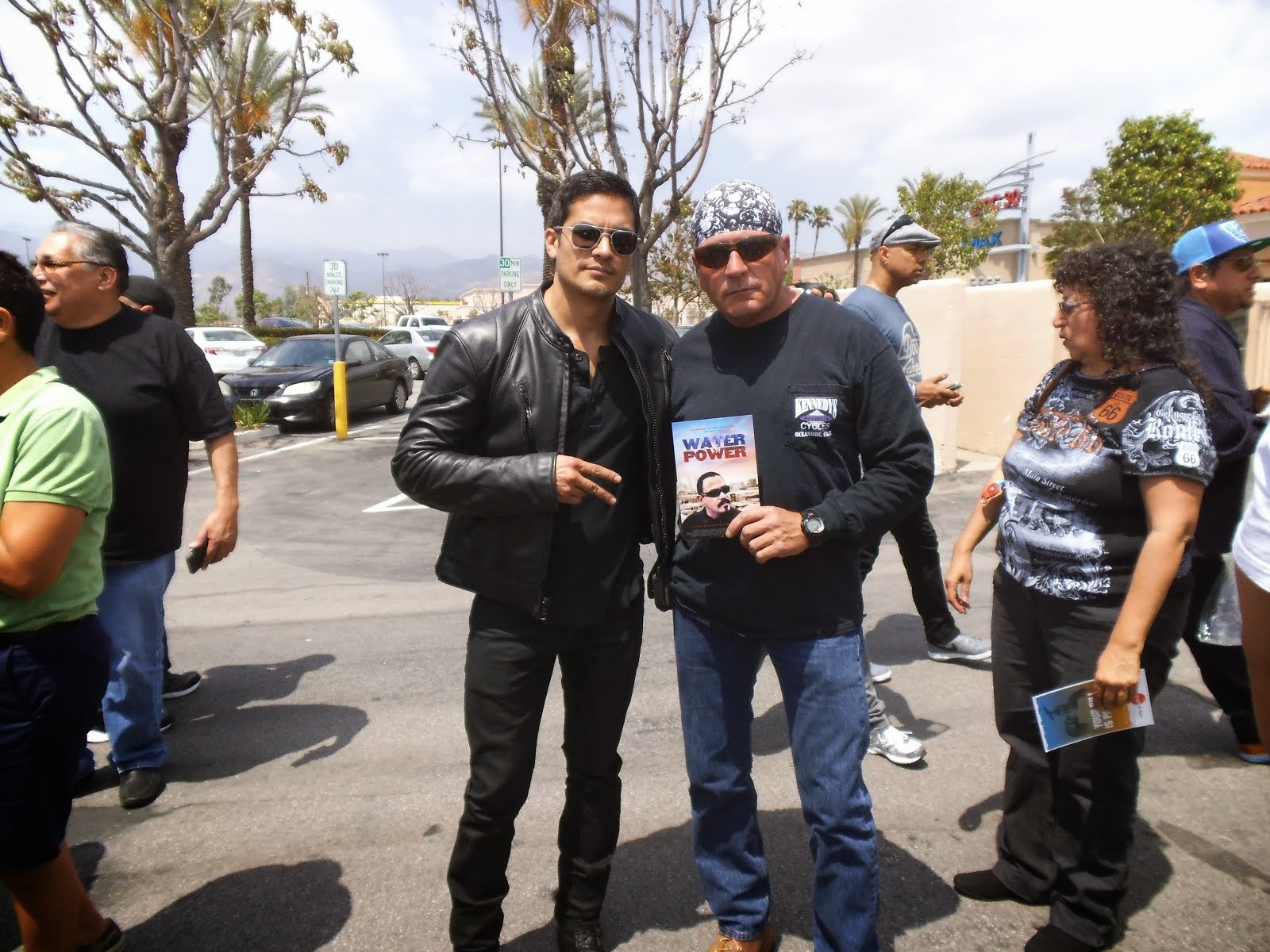PMMotorcycle Examiner Ken Bingenheimer
Phoenix police detectives look over the scene of a multi-motorcycle and trash truck accident on the Carefree Highway Thursday, March 25, 2010 in Phoenix, Ariz. (AP Photo/Matt York) The potential value of the "naturalistic" motorcycle rider study announced last week by the Motorcycle Safety Foundation (MSF) is "almost too much to comprehend," said MSF President Tim Buche. That study will get underway in a few months, once newer, better equipment becomes available.
In an interview Friday, Buche spoke in part about the relationship between the MSF's decision to work with Virginia Tech Transportation Institute (VTTI) on the naturalistic study and its decision not to help fund an Oklahoma State University (OSU) study of motorcycle crash causation.
Buche explicitly rejected the claim by Dr. Samir Ahmed, the head of the OSU study, that the MSF played games with the issue of funding the OSU study while all the time intending to fund the VTTI study instead. He described the MSF's decision process as follows.
1) The MSF board had been aware for some years that the naturalistic study option existed, but 2) it only learned in August of 2009 that it might be possible to conduct such a study with motorcycles. 3) The MSF initiated consideration of conducting a naturalistic study at a board meeting on Dec. 8, 2009, and 4) the proposal to actually do so was considered at the board's Mar. 18, 2010 meeting. 5) The decision to proceed was reached on Mar. 29, 2010.
"This was not a long, protracted, drawn-out discussion," said Buche. "The MSF may have contributed to a delay on the crash causation study since Dec. 8. We might have slowed it down but we certainly didn't put it on 'Pause.'"
Buche did confirm Ahmed's interpretation that the naturalistic study would have more relevance for training purposes than for infrastructure design or policy-making. He pointed out that most riders don't crash and the data generated by the VTTI study will help determine the factors that distinguish those who do from those who do not.
Whereas the crash causation study will gather data on reported crashes after they have occurred, the naturalistic study will equip motorcycles with sensors and cameras that will record road conditions, rider input, and a wealth of other factors at all times.
Note: We incorrectly reported here that the crash causation study will utilize cameras posted at intersections under study. The crash causation study will follow crash investigation practices developed by the Organisation for Economic Cooperation and Development and those practices do not include monitoring with video cameras.
A major strength of the naturalistic study, Buche explained, is that it will record not only accidents reported to the police but also "critical incidents" where the rider must adjust; near misses, where the rider takes "extreme evasive measures"; and crashes, even those where there is no injury and no police report.
Additionally, he said, "The data is not reliant on somebody else's assessment of what happened." He gave the example of a truck equipped with these cameras and sensors that crashed and the police concluded that the trucker was following too closely. The data showed, however, that in fact he had plenty of distance but took his eyes off the road for 4.5 seconds, and in that time traffic in front of him slowed abruptly. Afterward the trucker did not recall his distraction but it was there on tape.
As for the OSU crash causation study, Buche said, "We're excited about the fact that crash causation will continue." He said that while the VTTI study will track different data, for actual crash infomation the motorcycle industry will still have the MAIDS (Motorcycle Accident In Depth Study) and the OSU Study. The VTTI study "is just another input."
In the meantime, while the results from the OSU study will not be available for several years, the VTTI data will be available for analysis as early as one year from now. The plan is to equip 100 or more motorcycles with the sensory gear, in three jurisdictions. Different riders will be selected based on profiles that factor in elements such as driving record, years riding, training, age, and various physical characteristics.
"The MSF has committed at least $1.25 million up front and will probably spend more as this study spreads to other markets," he said. This money is not the same that was pledged by MSF members for the crash causation study, but instead comes from the normal MSF budget. The MSF is an organization made up on motorcycle manufacturers and Buche said that data from the VTTI study could be used by members in considering the instrumentation to be built onto their motorcycles.
***********************
Tim Buche also discussed the MSF's new training initiatives. His comments will be presented in a follow-up article.
http://www.examiner.com/x-378-Motorcycle-Examiner~y2010m4d4-MSF-President-Tim-Buche-discusses-motorcycle-safety-studies
skip to main |
skip to sidebar




Bill & Annie

Art Hall & Rusty


NUFF SAID.......


































































OOHRAH

ONCE A MARINE,ALWAYS A MARINE

GIVING BACK


MOUNT SOLEDAD














BIKINI BIKE WASH AT SWEETWATER










FRIENDS





BILL,WILLIE G, PHILIP










GOOD FRIENDS


hanging out

brothers


GOOD FRIENDS

Good Friends

Hanging Out




Bill & Annie
Art Hall & Rusty
Art Hall & Rusty


NUFF SAID.......



















NUFF SAID......



























Mount Soledad




BALBOA NAVAL HOSPITAL
RUSTY DANNY

ANNIE KO PHILIP

PHILIP & ANNIE

OUT & ABOUT

OOHRAH...

OOHRAH
ONCE A MARINE,ALWAYS A MARINE

ONCE A MARINE,ALWAYS A MARINE
American Soldier Network GIVING BACK

GIVING BACK
CATHY & BILL
PHILIP & DANNY & BILL

MOUNT SOLEDAD
bills today
EMILIO & PHILIP
WATER & POWER
WATER & POWER
bootride2013



BIKINI BIKE WASH AT SWEETWATER







ILLUSION OPEN HOUSE

FRIENDS


GOOD FRIENDS



BILL,WILLIE G, PHILIP









GOOD FRIENDS

GOOD FRIENDS
Friends
- http://www.ehlinelaw.com/losangeles-motorcycleaccidentattorneys/
- Scotty westcoast-tbars.com
- Ashby C. Sorensen
- americansoldiernetwork.org
- blogtalkradio.com/hermis-live
- davidlabrava.com
- emiliorivera.com/
- http://kandymankustompaint.com
- http://pipelinept.com/
- http://womenmotorcyclist.com
- http://www.ehlinelaw.com
- https://ammo.com/
- SAN DIEGO CUSTOMS
- www.biggshd.com
- www.bighousecrew.net
- www.bikersinformationguide.com
- www.boltofca.org
- www.boltusa.org
- www.espinozasleather.com
- www.illusionmotorcycles.com
- www.kennedyscollateral.com
- www.kennedyscustomcycles.com
- www.listerinsurance.com
- www.sweetwaterharley.com

Hanging out

hanging out
Good Friends

brothers
GOOD FRIENDS

EMILIO & SCREWDRIVER

GOOD FRIENDS
Danny Trejo & Screwdriver

Good Friends
Navigation
Welcome to Bikers of America, Know Your Rights!
“THE BIKERS OF AMERICA, THE PHIL and BILL SHOW”,
A HARDCORE BIKER RIGHTS SHOW THAT HITS LIKE A BORED AND STROKED BIG TWIN!
ON LIVE TUESDAY'S & THURDAY'S AT 6 PM P.S.T.
9 PM E.S.T.
CATCH LIVE AND ARCHIVED SHOWS
FREE OF CHARGE AT...
BlogTalkRadio.com/BikersOfAmerica.
Two ways to listen on Tuesday & Thursday
1. Call in number - (347) 826-7753 ...
Listen live right from your phone!
2. Stream us live on your computer: http://www.blogtalkradio.com/bikersofamerica.
A HARDCORE BIKER RIGHTS SHOW THAT HITS LIKE A BORED AND STROKED BIG TWIN!
ON LIVE TUESDAY'S & THURDAY'S AT 6 PM P.S.T.
9 PM E.S.T.
CATCH LIVE AND ARCHIVED SHOWS
FREE OF CHARGE AT...
BlogTalkRadio.com/BikersOfAmerica.
Two ways to listen on Tuesday & Thursday
1. Call in number - (347) 826-7753 ...
Listen live right from your phone!
2. Stream us live on your computer: http://www.blogtalkradio.com/bikersofamerica.
Good Times
Hanging Out

Key Words
- about (3)
- contact (1)
- TENNESSEE AND THUNDER ON THE MOUNTAIN (1)
- thinking (1)
- upcoming shows (2)
Blog Archive
-
▼
2010
(4242)
-
▼
April
(425)
- Harassment
- Who doesn’t tell the Motorcycle Helmet Story–the m...
- Latest on Vertical License Plate in Florida
- Motorcycle Training Bill Is Approved By The Senate
- lake-elsinore-police-crack-down-on-motorcycle-safety
- A Complaint about a cop
- ABATE of Florida Elections
- New Arizona immigration law and ID demands
- An Applicable Perspective
- Sask. government revising gang colour ban
- Hells Angels bike blessing
- Early motorcycle season concerns police
- Rogue endorses Frankie Kennedy for President of AB...
- ASMI’s Road Guardian Program creates “Thrash”
- Owner latest arrested after pizzeria brawl
- Motorcyclists challenge seizure of alleged illegal...
- Alleged Angel jailed on gun, drug charges
- Harley-Davidson has brought back some workers to N...
- New Study: Motorcycle Deaths Down Dramatically in ...
- Street brawl points to new outlaw motorcycle gang ...
- Bikers ride to support abused children
- ‘Web of deceit’ deserves stiff penalty: Crown
- Sask. government revising gang colour ban
- Hells Angels clubhouse days numbered?
- Betsy,
- The Gorilla Story or What is wrong with MRO's
- Mongols Patch Case
- Traffic collision deaths drop in state, CHP says
- Thunder Beach motorcycle rally rolls into town
- Bikers gather for motorcycle safety
- Charity ride denied ending at Old Lyme beach
- Tonight on the Biker Lowdown: Geneva & the Extermi...
- If you jump onto Harley, you’ll arrive ‘late to th...
- "E-MAIL BLAST" local 6
- Henderson PD Complaint
- DATE CORRECTION DATE CORRECTION
- BOLT talks about Rights and your abilities
- MMA UPDATE - Lynnfield EPA Bylaw defeated!
- Cops Charged & Things they don't want the public t...
- Russell Doza
- Due Process is a right, RIGHT? Watch out for our B...
- SB 435
- MMA Call to Action - Prevent a federal helmet law!
- Town Hall Freedom Rally
- Motorcyclist deaths drop; sour economy cited
- Bikers of Lesser Tolerance Announces New Chapter i...
- Man Charged With Homicide For Motorcycle Crash(WCC...
- Every day is Earth Day when you ride a motorcycle
- MMA Call to Action - Prevent a federal helmet law!
- False Assumptions About Motorcycle Noise and the A...
- SCORPIONS Added To STURGIS MOTORCYCLE RALLY
- Bridgestone Motorcycles to be showcased as Classic...
- Pagan's defendants plead no contest to conspiracy
- Local Winnipeg Free Press - PRINT EDITION Sentence...
- Motorcyclist deaths drop; sour economy cited
- U.S. Defenders Take Oregon Motorcycle Rights to th...
- Bikers 'wild' about helping others
- Group Raises Awareness About Motorcycle Safety
- Ill Highwaymen member will be tried in absentia
- Legislation targets criminal groups
- Bikers to dedicate wall to fallen comrades
- Harley Davidson 'chop shop' in Damascus
- Motorcycle Training Could Be Mandatory Related Pol...
- mandatory rider ed bill passed
- US Defender Program
- Helmet warning: A lone-officer motorcycle helmet c...
- CA: Police to conduct motorcycle safety enforcemen...
- Kouts biker trial opens next week
- Two facing charges in assault at 22nd Street Disco...
- Hogs, Fat Boys blessed to ride in New London
- Brawl or no brawl? Only bike gangs know the truth
- FOR IMMEDIATE ACTIONMMA Call to Action - Prevent a...
- MMA Legislative Alert-Falmouth Noise Bylaw
- MORE BULLSHIT OUT OF WASH. DC
- Start Planning for International Female Ride Day A...
- Metro Police To Begin Using Gang Injunctions Gang ...
- May is Motorcycle Awareness Month… schedule a ride...
- Londonderry man arrested in shooting Police say by...
- OFF THE WIRE http://www.google.com/hostednews/ap/a...
- And finally some good news
- Rival motorcycle gangs brawl in SE Minn
- Bikes Are Back In The Big Easy!
- LA_Calendar_Motorcycle_Show
- 13 Pagans defendants avoid federal charges via ple...
- LOCAL 6 INFO
- Women in the Wind Women's Ride Day
- Officers Ride for a Good Cause
- Attacks leave Hemet reeling
- Highwaymen defendant suffers heart attack; mistria...
- Man arrested in connection with weekend NH shooting
- Bikers stimulate small-town economies
- Harley-Davidson revs Sturgis Motorcycle Rally
- Gotta love Ted Nugent
- Gang Evidence Resulted in Reversal of Murder Convi...
- Law mandates noise levels, vendors, drinks
- Class Action Lawsuit brought against Census Bureau
- Biker’s Rally for Justice
- “THE BIKERS OF AMERICA,THE PHIL AND BILL SHOW”
- Bikers Against Discrimination (B.A.D.)
- WASHINGTON:Washington Trooper clocks motorcycle at...
-
▼
April
(425)
Bikers of America, Know Your Rights!... Brought to you by Phil and Bill
Philip, a.k.a Screwdriver, is a proud member of Bikers of Lesser Tolerance, and the Left Coast Rep
of B.A.D (Bikers Against Discrimination) along with Bill is a biker rights activist and also a B.A.D Rep, as well, owner of Kennedy's Custom Cycles
